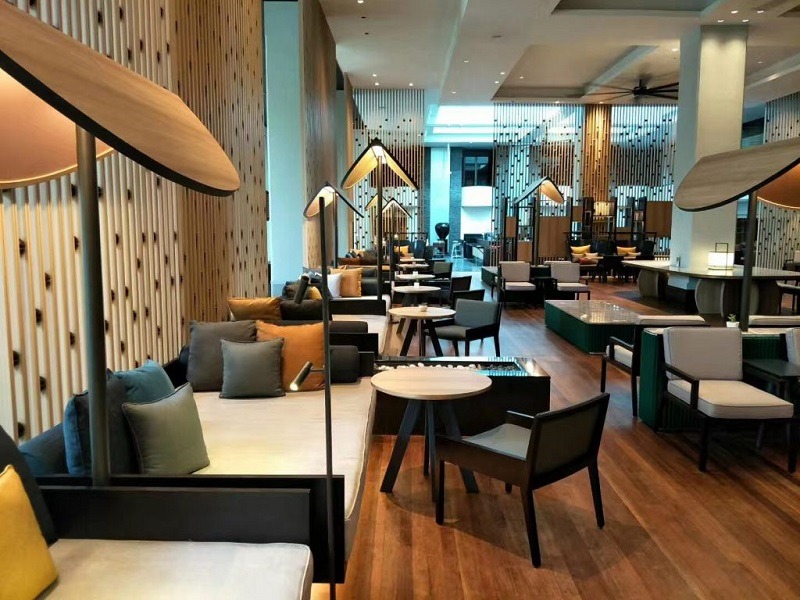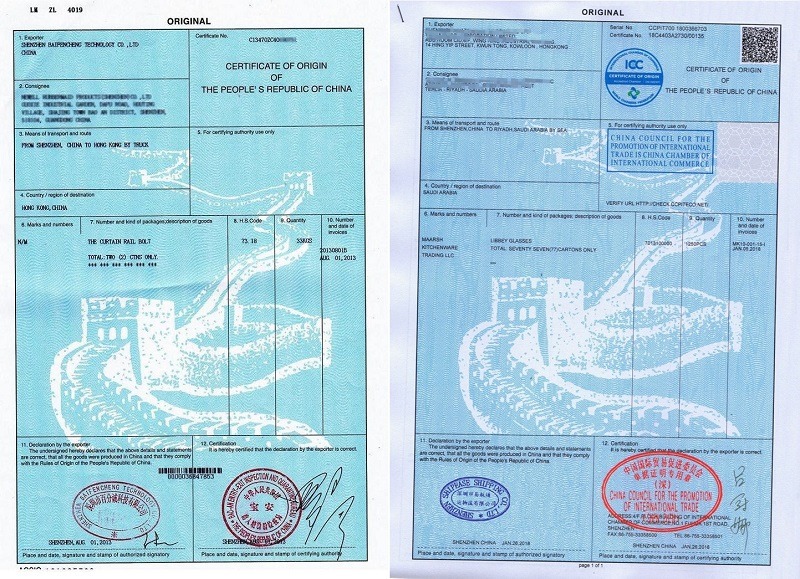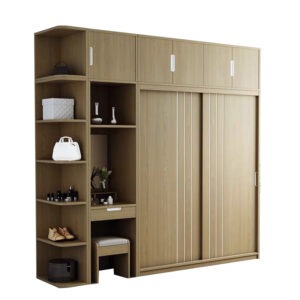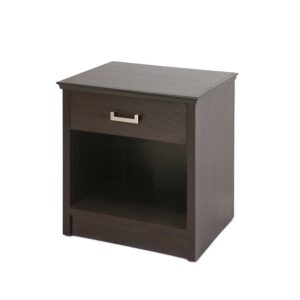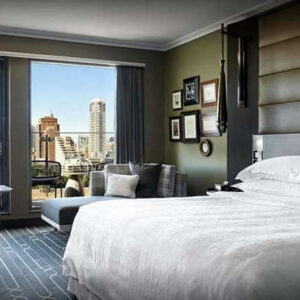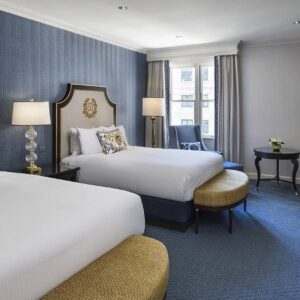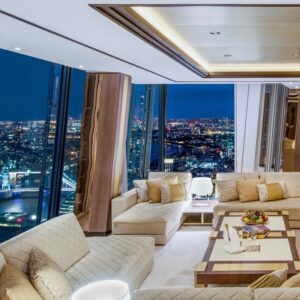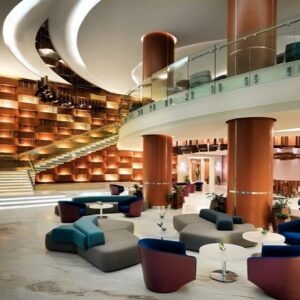There are many types of wood for furniture; commonly used are teak, black walnut, cherry, white oak, red oak, ash, rowan, beech, elm, maple, birch, quercus, ash, rubber, balsam, aspen, pine, and fir, etc. So what are the advantages and disadvantages of these woods, respectively? Which is the most expensive? Which is the cheapest? Which is the most suitable for making furniture? In this article, we will give a detailed description of these woods.
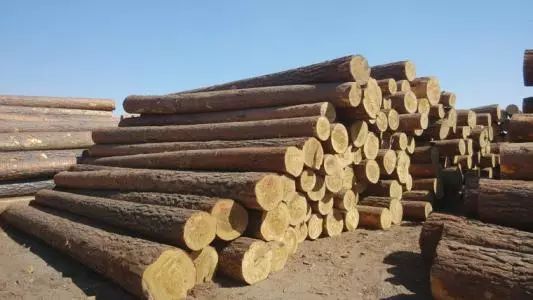
Types of Wood for Furniture
The woods used for furniture can be divided by price into four grades (for reference only):
- Luxury Grade: Teak wood, Black Walnut wood and Cherry wood.
- High-end Grade: White Oak wood, Red Oak Wood and Ash wood.
- Mid-range Grade: Chinese Catalpa wood, Beech wood, Elm wood, Maple wood, Birch wood, Chinese Oak wood and Chinese Ash wood.
- Low Grade:Rubber wood, Camphor wood, Pine woodm Poplar Wood and Fir wood.
Generally speaking, high-grade timber is mainly imported from Southeast Asia, South America, Africa, and Russia, which is hardwood, not easily deformed, and has a beautiful pattern. In contrast, most mid-range and low grade timber are species that grow domestically in China.
The above grades are general and not specific. The quality of the wood will vary somewhat depending on its origin and status. For example, good quality beech wood may be of a higher quality than some ash wood.
Luxury Grade Wood for furniture
01 Teak Wood
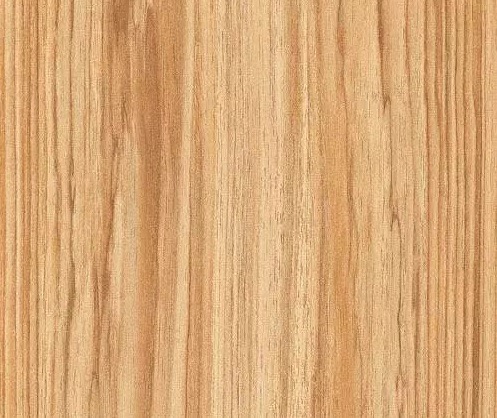
Teak wood has a high oil content, is moth-proof, and has good water resistance. Despite discoloration, it is not susceptible to decay and can be used outdoors. Teak is relatively expensive and complex to produce and is rarely used as an all-solid wood, mainly as a frame and veneer material.
| Colour | The heartwood of teak wood is yellowish-brown, and the sapwood is yellowish-white. |
| Woodgrain | The heartwood is dark brown striped. |
| Timber Drying | More time-consuming, but stable condition after drying. |
| Ease of Acquisition | Natural teak wood is difficult to obtain. |
| Processability | Easy, perfect finishes through cutting. |
| Paintability | Good integration with paint coatings. |
| Suitable for | Water resistant, suitable for outdoor use. |
| Main uses | Materials of furniture, flooring, interior decoration, and musical instrument. |
| Place of Origin | Indonesia, Thailand, and Myanmar. |
02 Black Walnut Wood
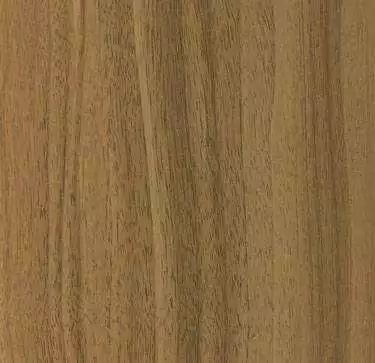
Black walnut wood has good workability and a glossy appearance even when sandpapered only. It absorbs painting well and can produce a shiny surface. The color appears subdued when doing UV painting. Excellent fixation, strong adhesion to nails and screws, and corrosion resistance. The disadvantage is that the surface is more easily scratched, and the scratches are more prominent.
Black walnut is often used as a veneer, and the solid wood is usually made into small furniture such as tables, chairs, and low cabinets.
| Colour | The heartwood is light brown to dark brown with a slight purple tinge, and the sapwood is creamy white to grayish purple. |
| Woodgrain | Straight wood grain with a slightly coarse texture and a dark striped pattern. |
| Timber Drying | Average, hardly any size deviations and deformation. |
| Ease of Acquisition | High circulation, long size is rare. |
| Processability | The wood is heavy, hard, flexible, and easy to cut. |
| Paintability | Good integration with paint coatings. |
| Suitable for | Not ideal for outdoor use. |
| Main uses | Furniture materials, flooring materials, structural materials, decorative synthetic solid wood veneer. |
| Place of Origin | Eastern to Central North America. |
03 Cherry Wood

Cherry wood has a glossy and delicate texture, good processability, soft wood grain, and sunlight into low-profile characteristics of brown, making it a popular interior decoration material in recent years. Cherry wood is suitable for high-end cabinet and closet panels.
| Colour | Heartwood is reddish brown, and the sapwood is yellowish white to creamy white. |
| Woodgrain | Soft brown to yellow-green wood grain on both heartwood and sapwood. |
| Timber Drying | Fast growth rate, slightly high shrinkage rate. |
| Ease of Acquisition | Normal, mainly produced in North America. |
| Processability | Easy cutting process, good adhesion. |
| Paintability | Even with anti-UV coating, the color still changes a lot. |
| Suitable for | Sapwood is slightly less resistant to decay and ideal for indoor use. |
| Main uses | Furniture materials, door and window materials, flooring materials, decorative synthetic solid wood veneer. |
| Place of Origin | Eastern North America. |
High-end Grade Wood for Furniture
04 Oak wood
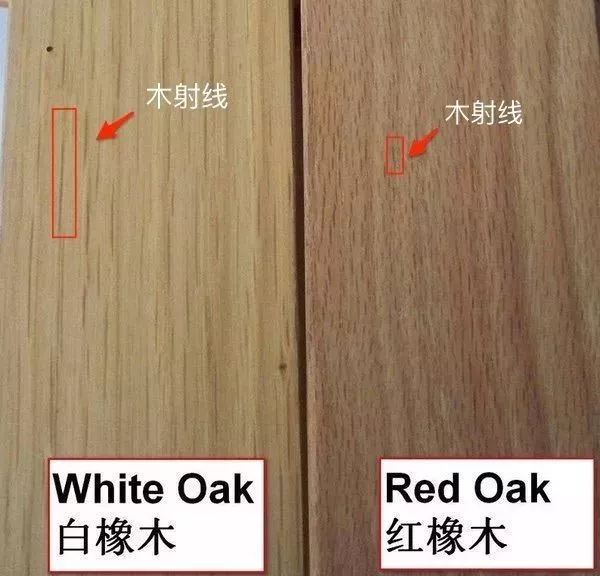
Red oak wood and white oak wood are commonly used but can not be distinguished by color, and the so-called “red oak is not red, white oak is not white” (red oak has “red” in its name only because its leaves will turn red color).
Red oak wood is widely used in furniture making because of its hard texture and outstanding processing performance. We can do it with complex modeling and carving, this type of wood is suitable for European-style furniture.
White oak wood is more expensive, and it can be harmoniously combined with metal and glass, making modern furniture.
There will be rubber wood instead of oak wood in the furniture market, and there are also Chinese miscellaneous woods (such as Quercus) pretending to be oak wood, so you need to check the wood details before buying solid wood furniture.
| Colour | Heartwood is yellowish brown, and the sapwood is light yellow. |
| Woodgrain | Clear wood grain, slightly rough texture. |
| Timber Drying | Normal. |
| Ease of Acquisition | Normal, mainly produced in North America. |
| Processability | Hard wood with excellent durability, but difficult to process. |
| Paintability | Good integration with paint, and easy to color. |
| Suitable for | Ideal for indoor use. |
| Main uses | Furniture materials, door and window materials, flooring materials, decorative synthetic solid wood veneer. |
| Place of Origin | North America and Europe. |
05 Ash Wood
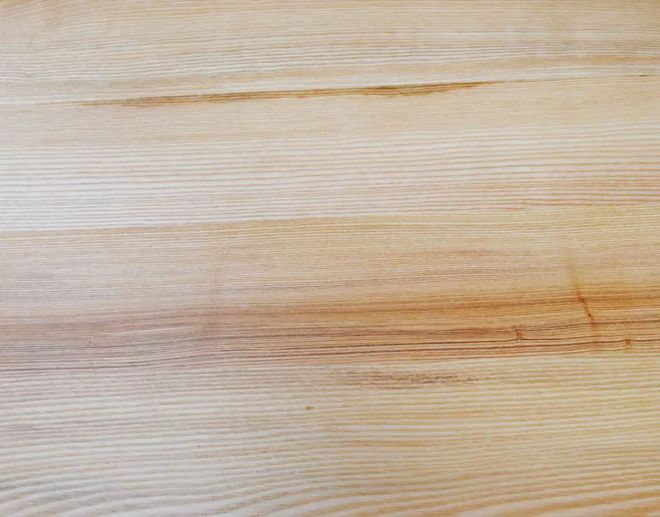
Most ash wood in the market is European ash wood and American ash wood. This wood is resistant to corrosion, has a natural and simple wood grain with a sense of luster, and is smooth to the touch. It is tough, strong, and has good seismic performance. It is the primary wood for high-end American furniture and new Chinese-style furniture, and also the regular wood for minimalist style furniture.
| Colour | Heartwood is grayish brown to light yellowish brown, and sapwood is almost white. |
| Woodgrain | Straight wood grain, rough texture. |
| Timber Drying | The drying performance is relatively poor, and the requirements for the drying treatment process are high. |
| Ease of Acquisition | Difficult, very scarce in the raw material market. |
| Processability | Good. |
| Paintability | Good. |
| Suitable for | Ideal for indoor use. |
| Main uses | Furniture materials. |
| Place of Origin | North America, Europe, and Russia. |
Mid-range Grade Wood for Furniture
06 Chinese Ash Wood
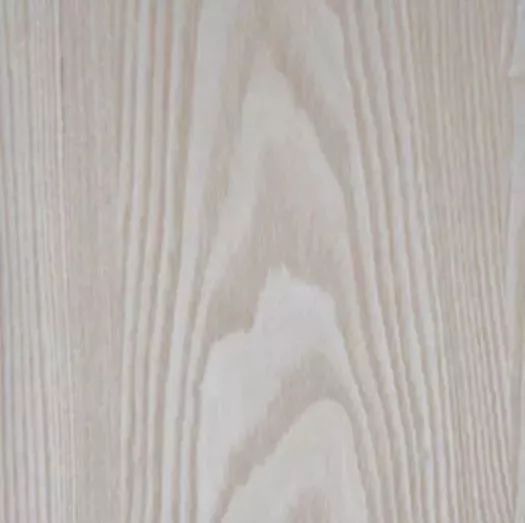
Chinese ash wood is easy to dry and cut, often used as structural materials and composite panels, but also for furniture, stair treads, handrails, door frames, and other interior woodworking materials. Ashwagandha can effectively absorb all paints but performs poorly in absorbing open-pore painting, etc.
| Colour | The heartwood is a light teal brown, and the sapwood is a light yellowish white. |
| Woodgrain | Straight, with indented and circled lines around the root. |
| Timber Drying | Good, fast drying speed. Need to pay attention to cracking at the section. |
| Ease of Acquisition | Normal. |
| Processability | Less deformation, easy cutting, and machining. |
| Paintability | Poor absorption of open painting in the spotted section. |
| Suitable for | Interior works such as structure or base treatment. |
| Main uses | Structural materials, composite panels, interior woodworking materials, furniture materials. |
| Place of Origin | Northern China, Hokkaido, Japan, Russia, North America. |
07 Beech Wood
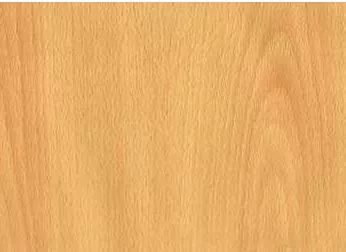
It is known as “Southern beech wood and Northern elm wood” in China, but beech wood has been classified as a second-class protected plant in China due to excessive logging. Beech wood is hard, resistant to wear and tear, and easy to process, and it is often used as a building material, furniture, and for doors and windows.
Beech wood is also commonly used for architectural and structural materials in temple buildings. Typical uses of this type of wood are wood flooring and center columns that express wood grain.
| Colour | Heartwood is yellowish brown to brown, and the sapwood is yellowish white to grayish brown. |
| Woodgrain | The annual rings are thick and prominent, with various textures. |
| Timber Drying | Time-consuming and difficult, prone to cracks and deformation. |
| Ease of Acquisition | Normal. |
| Processability | Normal, nice texture, excellent finish. |
| Paintability | Normal. There are many cases of paintless sanding finish. |
| Suitable for | Both indoor and outdoor. |
| Main uses | Structural materials, center column materials, flooring materials, furniture materials, door and window materials. |
| Place of Origin | Japan, Korean Peninsula, China, etc. |
08 Elm Wood
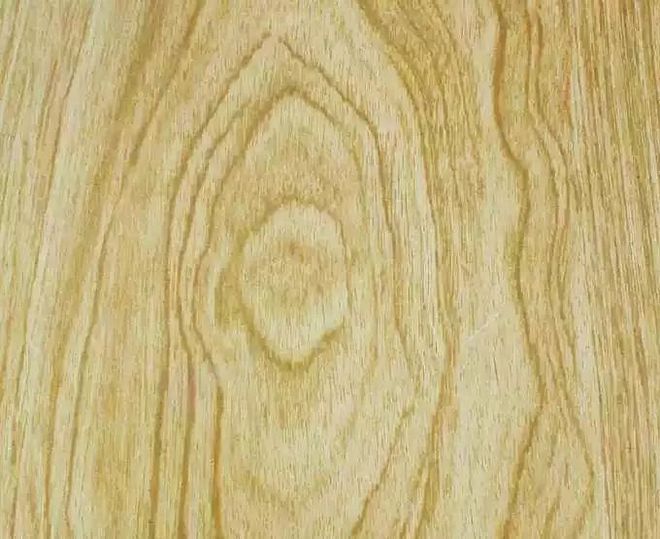
Elm is an ordinary domestic wood in China, cost-effective and suitable for mass consumption. Elm wood is tough, flexible, durable, ideal for carving, rough and clear wood grain, convenient for hot wax and wood wax oil painting, perfect for Chinese furniture, but easy to be insects.
In northern China, ancient furniture of the Ming and Qing dynasties is quite in existence, basically made of elm wood, which shows that the stability of elm wood material is excellent.
| Colour | Heartwood is dark purplish gray, and sapwood is dark yellow, clearly distinguished. |
| Woodgrain | The grain is clear, the plane is smooth, and the string pattern is beautiful. |
| Timber Drying | Easy to dry, not easy to deform and crack. |
| Ease of Acquisition | Normal. |
| Processability | Average, moderate hardness and strength. |
| Paintability | Normal. |
| Suitable for | Indoor. |
| Main uses | Furniture materials, carved lacquer crafts. |
| Place of Origin | Japan, Korean Peninsula, China, etc. |
09 Maple Wood
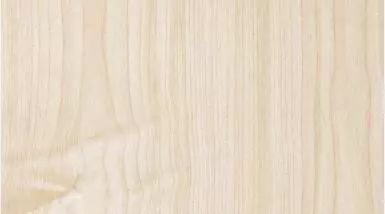
There are two kinds of common maple wood. One is soft maple, mainly produced in northeast China. The material is soft, light in color, and dense in texture.
The other is hard maple, mainly produced in the country of maple – Canada, slightly dark color and broad texture, hard texture, high density, strong material, high wear resistance, easy to handle surface.
In the interior style, hard maple furniture is very suitable for modern simple as the tone of the Japanese and Scandinavian style, warm, clean, elegant, with a simple appearance, furniture in the interior is very beautiful.
| Colour | The heartwood is a slightly grayish-tinted yellowish brown, and the sapwood is light grayish-white. |
| Woodgrain | Wavy shape wood grain, a wide variety. |
| Timber Drying | Longer, prone to warping and deformation when drying, |
| Ease of Acquisition | Normal. |
| Processability | Normal, heavy and hard wood, flexible, suitable for cutting. |
| Paintability | Can be waxed to protect the surface. |
| Suitable for | Not insect-proof, not ideal for outdoor use. |
| Main uses | Furniture, flooring, cutting boards, musical instruments, and decorative wood veneers. |
| Place of Origin | Widely distributed in the northern hemisphere, Canadian hard maple is the most representative. |
Low Grade Wood for Furniture
10 Rubber Wood
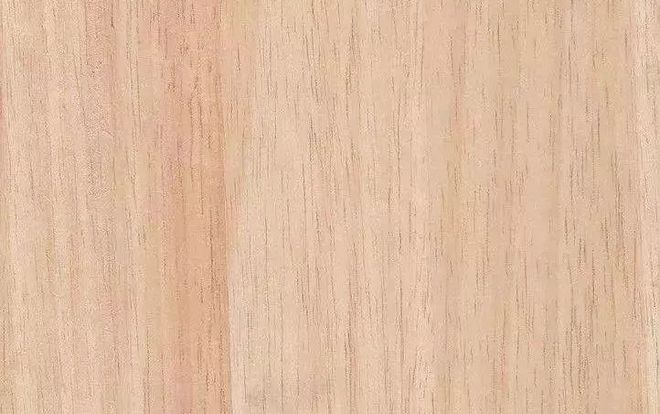
Rubberwood is the main trunk of the rubber tree, a subtropical tree used for the production of rubber, which can be used for furniture and building materials after aging without rubber. Originally grown in the Amazon region of America, rubberwood can now be found in southern China, Southeast Asia, Africa, and Oceania. Rubber wood does not have a long growth cycle, is lighter and softer, has a much higher content of sugars, proteins, and ash than other species is easily discolored, is prone to insects and decay, and has a lower wood price.
| Colour | The distinction between heart and sapwood is not apparent, with light yellow to yellowish-red-brown heartwood and light-colored sapwood. |
| Woodgrain | Wavy shape wood grain, a wide variety. |
| Timber Drying | Harder, easy to bend and deform, stable texture after drying. |
| Ease of Acquisition | Normal.Low cycle time, high yield, easy to obtain. |
| Processability | Moderate weight, hardness, strength, and toughness, the good mechanical processing performance of wood, but the board processing is easy to deform. |
| Paintability | Can accept all types of color stain and paint, good paint coating performance. |
| Suitable for | Not resistant to insects and decay, not ideal for outdoor use. |
| Main uses | Crafts, carvings, mirror frames, lamp sits, spice boxes, cutting boards, etc. |
| Place of Origin | Mainly in Southeast Asia and Southern China. |
11 Pine Wood
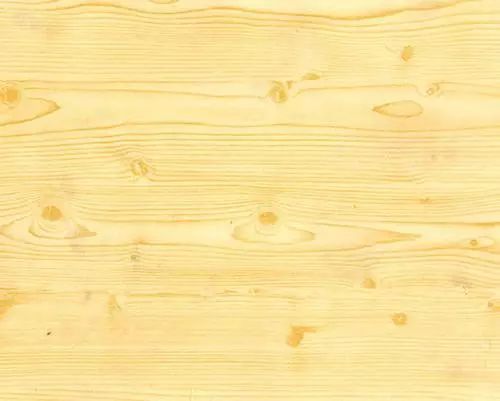
Pine is a coniferous plant (common coniferous plants are pine, fir, and cypress). It has a pine smell, yellowish color, boils, fast response to atmospheric temperature, is easy to swell, tough to dry naturally, and other characteristics, so it needs to be artificially treated, such as drying, degreasing to remove organic compounds, bleaching and unification of tree color, and neutralization of tree properties, so that it is not easy to deformation.
Many log furniture and children’s furniture are made of pine. Common pine woods are camphor pine, New Zealand pine, and Finnish pine (European spruce). More than half of the pine furniture on the market is made of these three pine, and the specific differences are as follows:
- Appearance: Camphor pine ≥ New Zealand pine > Finnish pine. Camphor pine and New Zealand pine can be knotless, but Finnish pine cannot.
- Price: Camphor pine (single-sided knotless) ≥ New Zealand pine (single-sided knotless) > Finnish pine, because Finnish pine has knots, while camphor pine and New Zealand pine can be without knots.
- Quality: Camphor pine > Finnish pine > New Zealand pine. Due to fast growth, New Zealand pine has a slightly softer texture.
- Smell: Camphor pine ≥ New Zealand pine > Finnish pine.
| Colour | The heartwood is reddish yellow, darkening with time, while the sapwood is pale yellow or reddish white. |
| Woodgrain | Medium texture and closed grain, may have stripes or wavy lines. |
| Timber Drying | Difficult, easy to crack and deform. |
| Ease of Acquisition | Easy. |
| Processability | The wood is soft, lightweight, and easy to work with. |
| Paintability | Good performance of painting. |
| Suitable for | Not anti-corrosive, mainly used indoors, but can be used outdoors after pressure treatment. |
| Main uses | Construction, pine furniture, flooring, outdoor projects, interior trim, and windows. |
| Place of Origin | Northeast China, USA, New Zealand, and Finland. |
12 Birch Wood
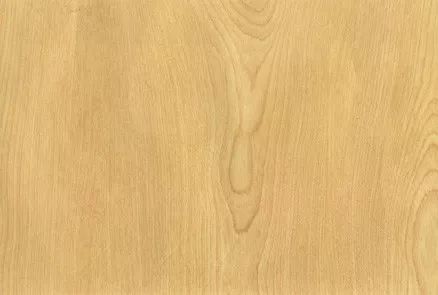
Birch is one of the first trees formed after the glaciers retreated. It is hardy, fast-growing, and more immune to pests and diseases. Birch annual rings are slightly prominent, the material structure is delicate, soft, and smooth, and the texture is soft or moderate. Birch is elastic, easy to crack and warp when dry, and not wear-resistant. Good processing performance, smooth cutting surface, good painting and gluing performance. Easy-to-distinguish features are more “water line” (black line).
| Colour | White birch, for example, with yellowish-brown sapwood and dark yellowish-brown heartwood. |
| Woodgrain | The annual rings are obvious, the grain is straight, and the structure is fine. Different sections can form wave patterns, rotational patterns, burr, and bird’s eye patterns. |
| Timber Drying | Difficult, easy to crack and deform. |
| Ease of Acquisition | Easy. |
| Processability | Good. |
| Paintability | Good paint and gluing properties. |
| Suitable for | Strong corrosion resistance, mainly for indoor use. |
| Main uses | Special plywood, flooring, furniture, pulp, interior decoration materials, and vehicle and marine equipment. |
| Place of Origin | Mainly in the cold northern hemisphere, such as northern Europe, Russia, northeast China, Japan, and North America. |
13 Poplar Wood
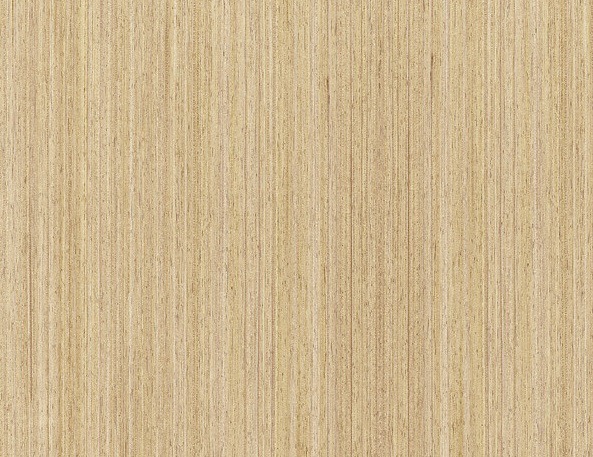
Poplar wood comes from the aspen tree, a fast-growing and abundant species with wide adaptability, long annual growth period, fast production, etc. It is widely planted worldwide, so poplar wood is plentiful, cheap and easy to obtain, with lightweight, high strength, good elasticity, long fiber, etc.
| Colour | The heartwood and sapwood are distinguished, with dark yellow sapwood and dark purplish gray heartwood. |
| Woodgrain | The grain of the wood is apparent, the plane surface is smooth, and the string surface is beautiful, with a pattern similar to that of “boxwood.” |
| Timber Drying | Harder, easy to crack, and warp. |
| Ease of Acquisition | Normal. |
| Processability | Good processing performance and smooth cutting surface. |
| Paintability | Good paint and gluing properties. |
| Suitable for | Not anti-corrosive, ideal for indoor use. |
| Main uses | Furniture materials, solid wood flooring boards, construction templates, packaging boards, baseboards, and short-cycle industrial raw materials.. |
| Place of Origin | Mainly in the northern hemisphere. |
Summary
That’s our introduction to the 13 types of wood for furniture, is it clear now?Welcome to comment and share our post.




